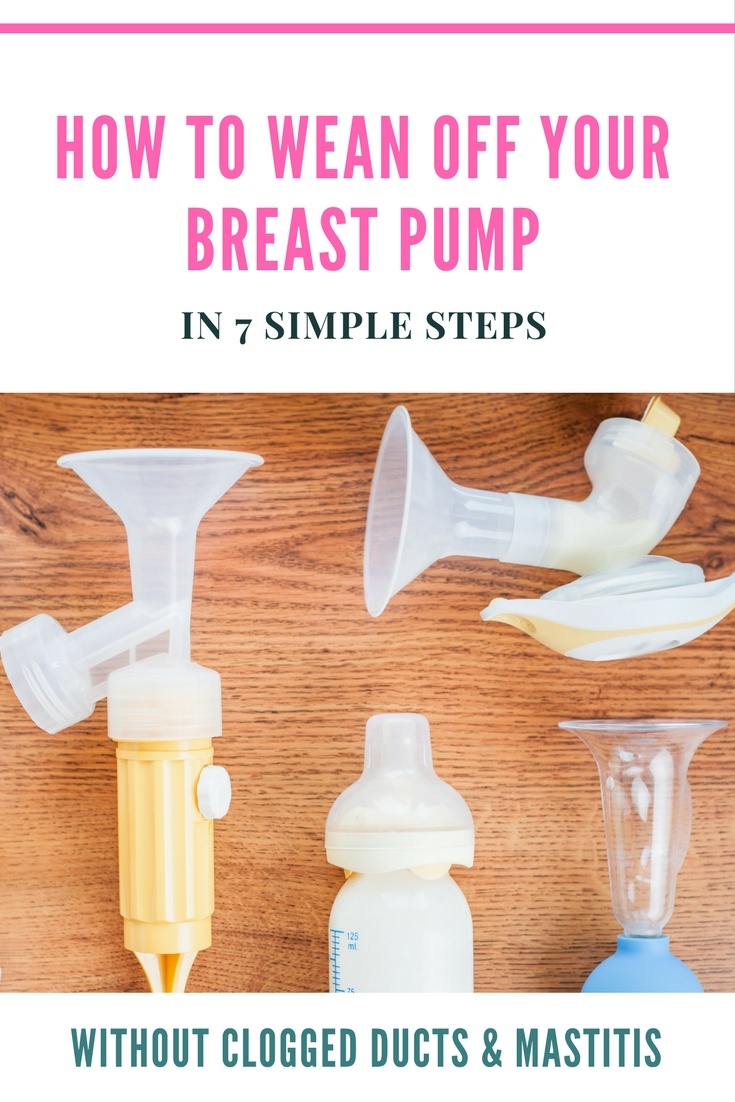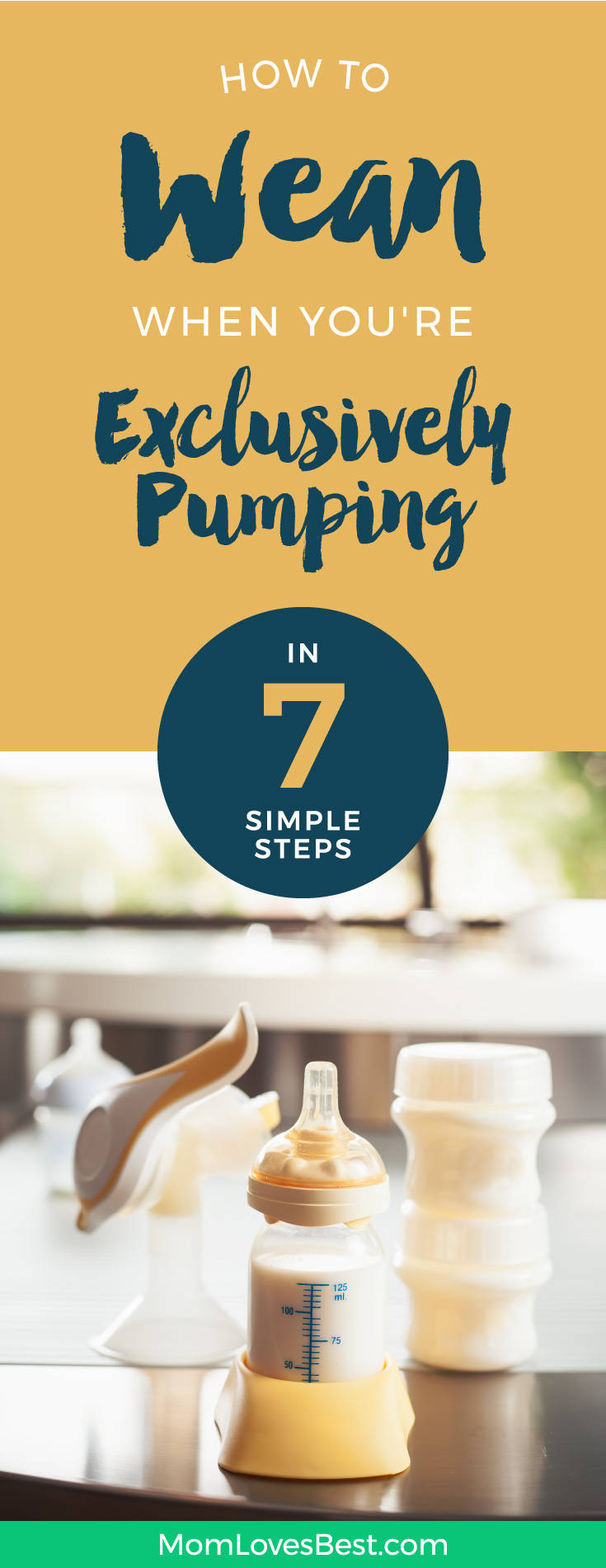
If you're anything like me, then your breast pump has been your best friend over the last several months. It's allowed you to return to work without the need for supplementation, build up a freezer stash for the occasional mom’s night out, and let your husband take part in the feedings.
There’s no question that your breast pump has had your back and given you peace of mind in knowing that you're always giving your baby the best.
However, you've finally reached that point when it's time to ask: "How do I stop?"
If you would like to learn how to effectively wean from the pump in a way that avoids the discomfort and negative side effects of quitting cold-turkey, you have come to the right place. Here’s everything you will need to know.
Quick Navigation
What Should I Know Before I
Wean From the Pump?
A woman’s breastmilk production is a pretty remarkable process - your body wants to make the perfect amount of milk for your baby. Volume readily increases if a baby drains the breast quickly and continues to suckle hungrily after it’s empty.
If a baby continually leaves milk in the breast the body interprets this and begins reducing the amount it makes (source).
When nursing babies wean from their mother’s breast, it happens naturally; their nursing volume and frequency decrease as their consumption of solids increase and their curiosity and independence calls them further away from their mother for longer periods of time. This process happens gradually over time and the body responds safely and effectively.
When weaning from a breast pump, there are several different approaches:

If you’re ready to wean from your breast pump it’s important you do so properly to not only avoid the discomfort that comes with your breasts being too full, but to also prevent clogged milk ducts and mastitis.
For this reason it's recommended to use a combination method which gradually decreases the amount of milk pumped at each session and slowly increases the time between sessions.
Thankfully, it’s considerably easier to convince your body to decrease your milk production than it is to try to coax it to increase. If you follow these steps you should be able to gently and effectively stop your body’s milk production with minimal discomfort.
How to Stop Pumping Breast Milk In 7 Steps
1. Stop All Supplements or Nursing Boosters
If you’re taking homeopathic supplements or following a special diet in order to maintain your milk supply, stop. (If the supplements are being taken under the care of your doctor, make sure to consult with them first to see whether you need to gradually decrease your dose.)
Many women drink extra water in order to boost their supply. Make sure you stay hydrated and drink enough water, but don’t worry about going the extra mile anymore.
Most women’s bodies have peak milk production in the morning, and gradually taper off into the evening (source). It might be possible to drop an evening pumping session without any extra effort or discomfort. Your body isn’t producing much anyway, so it won’t be much of a shock to just stop pumping in the evening.
Cut down the amount of time you pump to decrease your output. For example, if your pumping sessions typically last 20 minutes, reduce them to 15. This will cause you to relieve the breast discomfort of being overly full, but won’t drain the breast completely.
Keep your pumping sessions at this length for 4-5 days. After failing to empty your breasts on a consistent basis for several days in a row, your body will automatically reduce its production to meet your new, reduced demand.
4. Increase the Length of Time Between Pumping Sessions
Gradually add time between pumping sessions. Let your comfort level be your guide - if you’re uncomfortable 30 minutes after your usual time, then pump. If you can delay your pumping session by an hour or two, then go for it.
Don’t try to push the envelope and wait until you’re experiencing extreme fullness or breast pain as that can cause clogged ducts or mastitis, but do try to extend the times between sessions as much as you can.
This technique can be done in conjunction with Step 3, meaning you’re reducing your session length and frequency at the same time.
Continue to combine steps 3 & 4 - slowly reducing your pumping length and extending times between pumping sessions. Pay attention to your body and its comfort level, and let it be your guide.
6. Watch for Clogged Milk Ducts and Mastitis
Clogged milk ducts usually feel like localized pain in the breast. Sometimes you can feel a hard lump or the area feels hot. Other times you can see where you have a clogged duct; the area will look swollen or enlarged (source). If you have a clogged duct, make sure it is resolved before you continue with the weaning process.
If you do notice a clogged duct, keep pumping on that side to completely empty the breast - don’t worry about how long your sessions “should” last according to your weaning schedule.
Put hot compresses on the area or massage it during pumping. Once the pain and swelling are gone, this means the duct has reopened and you may return to your weaning plan.
If you develop a fever, have chills or flu-like symptoms, or notice unusual discharge from your nipple, you may have mastitis which is a bacterial infection within the breast (source). You will need to see your doctor for antibiotics to heal this infection.
You are likely to get to a point where your output is so low that you’ll start to wonder, “Am I ready to just quit pumping now?” The best way to know is to try. Stop pumping altogether and see how you feel.
If you start to feel uncomfortable fullness, you may have to work on your weaning plan a little more. And if you don’t - then congratulations! You’ve successfully weaned yourself from the breast pump.
The Bottom Line
Weaning from the breast pump doesn’t have to be complicated. By gradually reducing your pumping frequency and shortening your pumping sessions, your body will naturally respond to the lowered demand and automatically decrease your milk supply. This will hopefully allow you to drop the need to pump with minimal breast discomfort and other side effects.
What tricks did you use to stop pumping? Tell us in the comments - and share this with a friend who’s ready for freedom from her pump!

Original article and pictures take momlovesbest.com site
Комментариев нет:
Отправить комментарий